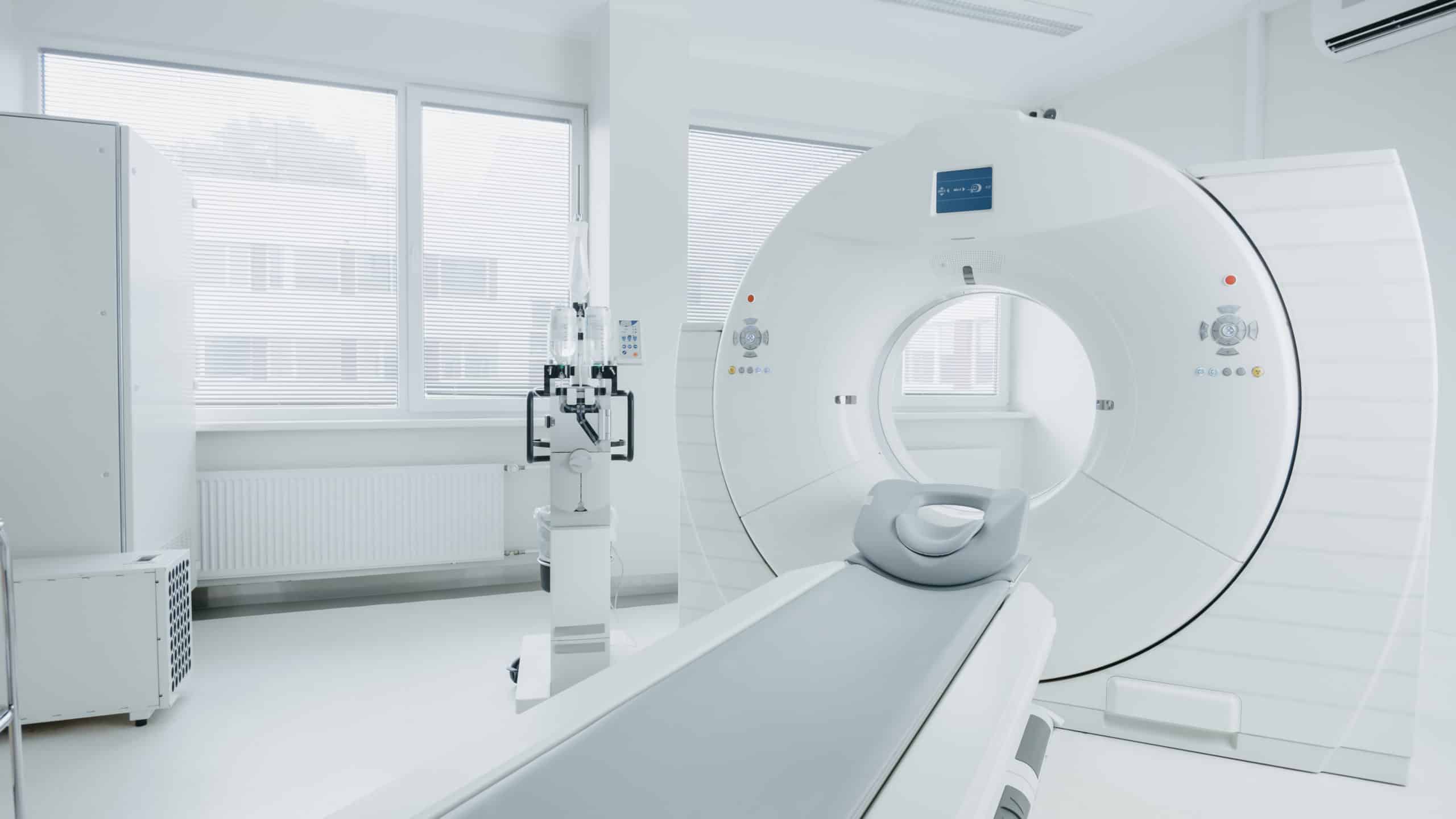A PET scan measures the metabolic (life-sustaining) activity of different cells in the body.
Important Note
Do not eat or drink for at least six hours before a PET scan to ensure an accurate reading.
More metabolically active cells use more sugar (glucose) for energy. By injecting a small dose of radiolabeled glucose (such as fluorodeoxyglucose, or FDG) into the blood, a PET scanner can detect parts of the body that use more glucose and are therefore more metabolically active. Since most cancer cells are highly metabolically active, they will show up bright on a PET scan.
Physicians can use PET scans to detect cancer cells at the primary site, in lymph nodes, and in distant sites of the body. However, PET scans should be interpreted by an experienced radiologist since areas of inflammation, infection, or recent surgery or trauma can also show up bright on a PET scan and do not indicate a cancer. In addition to this, sometimes low grade, slow growing malignancies or very small tumors may not be identified on a PET scan.
When are PET Scans Used?
Doctors recommend waiting a few weeks after surgery and a few months after radiation to achieve the most accurate PET results. PET scans are highly sensitive and pick up on areas of high metabolic activity that are not always cancer cells, including areas of infection and inflammation. If a PET scan is performed too quickly after surgery or radiation therapy, it may report a false positive due to the inflammation caused by the treatment itself.
Advantages
- There is very little radiation exposure to you from the scan itself.
- It can be combined with a CT or MRI scan to obtain more precise information.
- In some cases, it is better able to distinguish cancer from abnormalities related to the effects of radiation treatment than CT or MRI scans.
Disadvantages
- Image results are less precise than anatomic studies such as CT and MRI scans.
- It can be time-consuming, and you must lie completely still.
- It will not always detect small cancers, or all types.
- It will light up all areas of high metabolic activity, including those that are noncancerous, such as inflammation, infection, trauma, or recent surgery.
How to Prepare
- A patient must prepare for the scan the night before by following all the instructions they are given (including exercise, meal and medication requirements).
- It is important that patients do not eat anything (including chewing gum) for at least six hours before the scan. The PET scan typically uses a molecule that looks like glucose (the sugar that all cells in the body use for energy), so eating would affect the scan.
- PET scans are usually combined with a CT scan (called a PET/CT scan). They are sometimes combined with an MRI. This helps pinpoint the location of metabolically active cells.
What to Expect
- A nurse will check your blood glucose level.
- The nurse will insert an intravenous (IV) line to allow for the administration of FDG.
- Before the scan, you should remove anything that contains metal, including hearing aids, eyeglasses, or dentures.
- During the scan, you should try not to speak or move.
- The scan can take 30 to 90 minutes.
- A CT or MRI scan may also be performed in the same machine or in a separate machine.
After the PET Scan
A nuclear medicine doctor or radiologist will analyze the results of the scan and create a report. The report will identify areas of increased energy use in the body, which indicate possible tumor sites or areas of inflammation. It is important to follow up with your doctors about the results and interpretation of your imaging.

Download This Section
Feel free to download and print this page.
It’s free for personal use and to share with others you think might benefit from the information provided.











